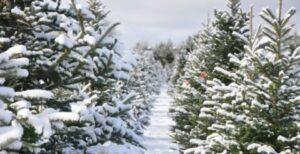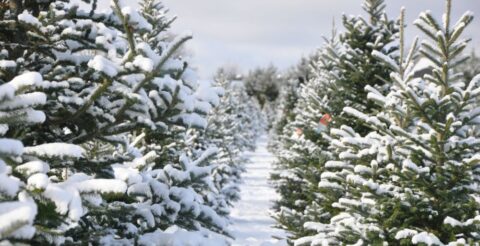Real vs. Fake? Which Christmas Tree is Better For the Environment?

 Every year when December rolls around (or November, depending on who you are), the topic of Christmas trees starts flitting across your mind. Should I buy real? Is this the year I give in and buy a fake tree? Is one better for the environment than the other? After all, when you live in a place as beautiful as the Western United States, it’s natural to want to protect it. Let’s dive into the pros and cons of each and see which tree will make the cut this year. (See what we did there?)
Every year when December rolls around (or November, depending on who you are), the topic of Christmas trees starts flitting across your mind. Should I buy real? Is this the year I give in and buy a fake tree? Is one better for the environment than the other? After all, when you live in a place as beautiful as the Western United States, it’s natural to want to protect it. Let’s dive into the pros and cons of each and see which tree will make the cut this year. (See what we did there?)Real Christmas Tree
- Nostalgic piney scent.
- You can have your Hallmark moment at the Christmas tree farm every year.
- Doesn’t require the intensive carbon emissions that it requires to produce and ship artificial trees.
- When harvested correctly, there are MORE trees left standing than are harvested. That means that of the 350-500 million trees growing on tree farms across the country, only 30 million are harvested for Christmas trees each year.
- Purchasing a real Christmas tree helps support small tree farmers and local businesses, like the one owned by the cute lumberjack who entices the big-city girl to leave her law firm and start a bakery for orphans in a Hallmark movie.
- Christmas trees are grown on soil that often does not support other crops.
- The farms that grow Christmas trees stabilize soil, protect water supplies, and provide a habitat for wildlife while they’re growing.
- For every tree cut, most farmers plant one to three saplings in its place, making trees a sustainable resource.
... Or Fake
- You’re not vacuuming pine needles off your floor until June each year.
- Convenience. You can use this tree year after year AND you don’t have to spend hours in tears detangling the lights, as many artificial trees come pre-lit.
- If used for more than five years, artificial trees can have less of an environmental impact than buying a new tree each year.
Picture credit: Candy Cane Christmas Tree Farm, Oxford, MI. Chiu, A. (2022, November 25). Are real or artificial Christmas trees better for the environment? The Washington Post. Retrieved December 5, 2023, from https://www.washingtonpost.com/climate-solutions/2022/11/25/artificial-tree-real-christmas-environment/ (n.d.). Real vs. Fake—Which Christmas Tree Is Better for the Environment? The Nature Conservancy. Retrieved December 5, 2023, from https://www.nature.org/en-us/what-we-do/our-priorities/protect-water-and-land/land-and-water-stories/real-vs-fake-christmas-tree/ National Christmas Tree Association (n.d.). Environmental Benefits. Retrieved December 5, 2023, from https://realchristmastrees.org/education/environmental-benefits/


Every time I visit your site, I leave feeling more knowledgeable.